#hanzade sultan daughter of sehzade bayezid
Photo






𝐭𝐡𝐞 𝐠𝐫𝐚𝐧𝐝𝐝𝐚𝐮𝐠𝐡𝐭𝐞𝐫𝐬 𝐨𝐟 𝐒𝐮𝐥𝐞𝐲𝐦𝐚𝐧 𝐭𝐡𝐞 𝐌𝐚𝐠𝐧𝐢𝐟𝐢𝐜𝐞𝐧𝐭
#history#historyedit#ottoman history#suleyman i#nergissah sultan daughter of sehzade mustafa#ayse humasah sultan#humasah sultan daughter of sehzade mehmed#ismihan sultan daughter of selim ii#gevherhan sultan daughter of selim ii#sah sultan daughter of selim ii#mihrimah sultan daughter of sehzade bayezid#hatice sultan daughter of sehzade bayezid#sah sultan daughter of sehzade mustafa#ayse sultan daughter of sehzade bayezid#hanzade sultan daughter of sehzade bayezid#fatma sultan daughter of selim ii#ottomanladiesedit
259 notes
·
View notes
Text
International Known Queens & Empresses (4/?)
Haseki Hürrem Sultan


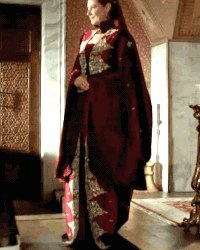



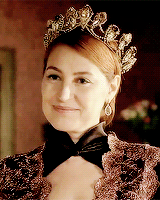
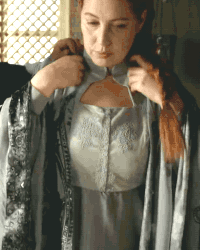


Daughter of Lisovsky (?)
Wife (Haseki Sultan) of Suleiman the Magnificent
Mother of Sehzade Mehmed, Mihrimah Sultan, Sehzade Abdullah, Sultan Selim II, Sehzade Bayezid, and Sehzade Cihangir
Grandmother of Ayse Hümasah Sultan, Sultanzade Osman (Mihrimah), Sultan Murad III, Sehzade Mehmed (Selim), Sehzade Abdullah (Selim), Sehzade Cihangir (Selim), Sehzade Mustafa (Selim), Sehzade Suleiman (Selim), Ismihan Sultan (Selim), Gevherhan Sultan (Selim), Sah Sultan (Selim), Fatma Sultan, Sehzade Orhan, Sehzade Osman (Bayezid), Sehzade Abdullah (Bayezid), Sehzade Mahmud (Bayezid), Mihrümah Sultan (Bayezid), Hatice Sultan (Bayezid), Ayse Sultan (Bayezid), and Hanzade Sultan (Bayezid)
12 notes
·
View notes
Photo

Family of Bayezid II (quite big lol)
+1 information about the daughter of Mahmud, Ayşe: She surely was still alive between November 1555 and November 1556 since she is listed in Old Palace register with a daily stipend of 70 aspers.
The same 70 apsers daily stipend was given to Sehzade Ahmed’s unnamed daughter. We dont know if this stands for Kamer, Fatma or the unknown daughter.
About his daughters:
Selcuk Sultan 1459-1508
- mother unknown
- she married twice: 1/Ferhad Bey in 1484; 2/Mehmed Bey in 1486
- she had five children: 1/ Nesl-i Şah who died in 1564, she married Halil Paşa in 1510; 2/Gaazi Husrev Bey who was governor of Sarajevo, which he developed into a great city, then he was governor of Smederevo (1521), governor of Bosnia (1526-1533), then governor of Belgrade in 1533 and again governor of Bosnia from 1536 to 1541. He died in Sarajevo and was buried there. 3/ Hanzade who married her cousin, a son of Ilaldi Sultan 4/ unnamed princess who married the son of Halil Paşa (her eldest sister’s husband) in 1510; 5/unnamed princess who married twice, the first time to Grand Vizier Yunus Pasha and the second time to Defterdar Mehmed Çelebi (later Grand Vezier and Egypt governor)
Ayşe Sultan 1465 - after 1515
- she may have been sister to Şehzade Ahmed or to Şehzade Korkut. Ahmed was born in 1466 Korkud in 1467 so Ayşe surely was born before them.
- she married Güvegi Sinan Pasha in 1480 and had several (at least 6) children but we don’t have information about each one of them: 1/ GevherŞah who married one İbrahim Bey 2/ KamerŞah who married the son of Grand Vizier Mesih Paşa 3/ Fatma who married another son of Grand Vizier Mesih Paşa 4/ Ahmed Bey; 5/ Mustafa Bey; 6/Hanzade Ayşe Mihrihan who later married Dukaginzade Sultanzade Mehmed Paşa and had a daughter Mihri Hatun, who surely was alive between 1555 November and 1556 November.
- she built a mosque and a school in Gallipoli and in 1505 she established a foundation
Hatice Sultan 1465 - 1500
- the identity of her mother is unknown
- she married to 1/ Müderris Kara Mustafa Pasha around 1479 and had two children with him: Ahmed Çelebi (1480?-1500) and Hanzade; 2/ she married Faik Pasha after 1483
- she built a mosque, school and fountain in Edirnekapi
- she was buried in Bursa in the Hatice Sultan Tomb, built by her son
Gevherimülük Sultan 1467 - 1550
- mother unknown
- she married to Ahmed Pasha and had 2 children: 1/ Nesli Şahwho died in 1559, she married Dukaginzade Iskender Pasha; 2/ Mehmed Pasha who died in 1557, was governor of Aleppo and Egypt, he married his cousin Ayşe Hanzade Mihrihan, daughter of Ayşe Sultan
- she built a school near the Zal Mahmud Pasha Mosque, and she was buried there
Şehzade Hundi Sultan 1465(?) - 1511
- some suggest a birth date of 1470 but it is not correct as she was the daughter of Bülbül Hatun and so Şehzade Ahmed’s sister. Ahmed was born in 1466 so Hundi had to be born before him.
- Hersekzade Ahmed Pasha was her husband from 1484 and had children with him: 1/ Mustafa Bey who was governor of Bozok and died in 1533 killed by rebels in his province; 2/ HümaŞah who died after 1551; 3/ Musa Bey
Ilaldi Sultan ? - before 1518
- mother unknown
- she had two children with her husband Hain Ahmed Pasha: 1/Aynişah who died after 1531 and married Abdüsselam Çelebi; 2/ unnamed son who married his cousin, the unnamed daughter of Selçuk Sultân
- she wrote a congratulation letter to Selim I
Aynişah Sultan 1464(?) - after 1512
- daughter of Şirin Hatun and sister of Şehzade Abdullah (b. 1465)
- she married Akkoyunlu Damad Göde Ahmed Bey in 1490 and had children: 1/ Hanzade who married to Yahyapaşazade Gaazi Küçük Bali Paşa; 2/ unnamed princess who married Şehzade Alaeddin, one of Şehzade Ahmed’s sons
- she built a school in Istanbul and established a foundation in 1506
- she sent letters of congratulations to Selim I when he became sultan
Hüma/Hümaşah Sultan ? - after 1504
- mother unknown
- she married Antalyalı Bali Paşa around 1482
- she was buried in Bursa
Kamer/Kamerşah Sultan ? - ?
- she was the daughter of Gülruh Hatun
- she was married to Damad Nişanci Kara Davud Pasha, with whom she had a daughter who later married one Mesih Bey.
- she was buried in the tomb of her mother in Bursa
Şah/Şehzade Şah Sultan ? - after 1506
- her mother is unknown
- she married Nasuh Bey around 1490 and had a daughter
- she was involved in charity
- she built a mosque in 1506
- she was buried in her sister Hatice’s mausoleum in Bursa
Sofu Fatma Sultan 1466(?) - after 1515
- she was the daughter of Nigar Hatun and sister of Şehzade Korkut and since Korkut was born in 1467 so actually Sofu Fatma should born even before 1464/5/6.
- she married Güzelce Hasan Bey around 1504 and had two children with him: 1/ Mehmed Çelebi who later married Ayse Sultan daughter of Şehzade Alemşah; 2/ unnamed daughter who later married Ahmed Bey, son of Ali Bey and Fatma Hanımsultan
- about her marriages it is possible she had a first marriage which is not listed by most historians (she would be too old for a first marriage in 1504). She should have a first marriage around the early 1480's. About the identity of the first hubby: Öztuna claims Sofu Fatma's firs husband was İsfendiyâroğlu (Cândâroğlu) Mirza Mehmed Pasha, son of Kyzyl Ahmed Bey. Öztuna gives no marriage date. The problem is, Fatma remarried in 1504 but the pasha was alive until 1530. I don't see why would they divorce, so well I don't know. Öztuna claims they had a son, Mehmed Bey, together who later married Selim I's daughter Gevherhan. Its fine Fatma's son Mehmed did marry Gevherhan okay. But then why would she name her second son also Mehmed? Because she had a son Mehmed from her second marriage who married Ayse Sultan daughter of Şehzade Alemşah. So just why 2 Mehmeds? I dunno this... Maybe one of the names is mistaken?
- she was charitable --> left all her possession to the poor when she died
- she was buried in the tomb of her half-brother Şehzade Ahmed in Bursa
Sultanzade Sultan ? - ?
- daughter of Hüsnüşah Hatun and sister of Şehzade Alemşah
#Bayezid ii#Ayşe hatun#ayşe#ayse#bülbül hatun#bülbül#ferahşad hatun#ferahsad#hüsnüşah hatun#husnusah#ayşe gülbahar hatun#ayse gülbahar#gülbahar#gulbahar#gülruh hatun#gulruh#nigar hatun#nigar#şirin hatun#şirin#sirin#Abdullah#Ayşe sultan#Hatice Sultan#Ahmed#Korkut#Gevherimülük Sultan#gevherimülük#gevheri#hatice
28 notes
·
View notes
Photo








Ottoman Princesses named: Hanzade
Hanzade is a name of Persian origin, meaning descendant (-zade) of the ruler (han-)
#history#historyedit#ottoman history#selcuk hatun daughter of mehmed i#aynisah sultan daughter of bayezid ii#ayse sultan daughter of bayezid ii#hanzade sultan daughter of ahmed i#hanzade sultan daughter of murad iv#hanzade sultan daughter of sehzade bayezid#abdulmecid ii#princessesnames
743 notes
·
View notes
Photo


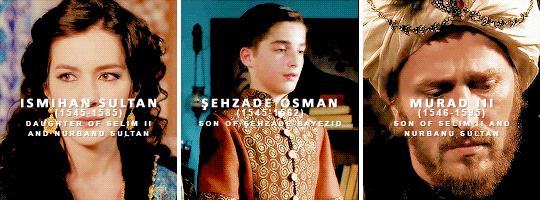
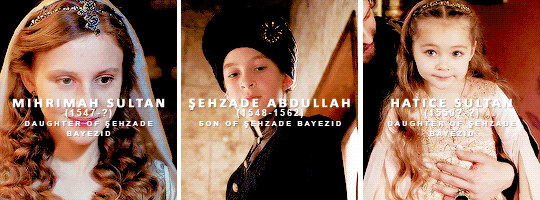

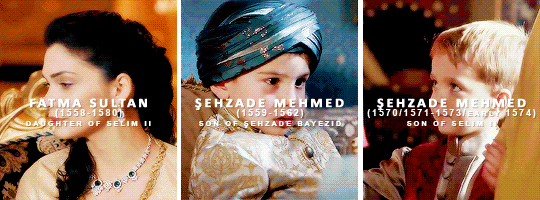

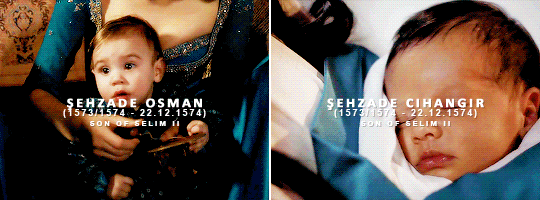
Hürrem Sultan + known grandchildren
#history#historyedit#ottoman history#ottomanladiesedit#ayse humasah hanimsultan#sultanzade osman bey son of mihrimah sultan#humasah sultan daughter of sehzade mehmed#sah sultan daughter of selim ii#ismihan sultan daughter of selim ii#gevherhan sultan daughter of selim ii#fatma sultan daughter of selim ii#mihrimah sultan daughter of sehzade bayezid#ayse sultan daughter of sehzade bayezid#hanzade sultan daughter of sehzade bayezid#hatice sultan daughter of sehzade bayezid#murad iii#long post
1K notes
·
View notes
Photo








the known grandchildren of Handan Valide Sultan -- requested by anon
#history#historyedit#ottoman history#osman ii#sehzade mehmed son of ahmed i#ayse sultan daughter of ahmed i#fatma sultan daughter of ahmed i#gevherhan sultan daughter of ahmed i#hanzade sultan daughter of ahmed i#murad iv#sehzade bayezid son of ahmed i#sehzade huseyin son of ahmed i#sehzade kasim son of ahmed i#atike sultan daughter of ahmed i#sehzade suleyman son of ahmed i#ibrahim i#abide sultan daughter of ahmed i#ottomanladiesedit
258 notes
·
View notes
Note
Hi, I love your content, it's very interesting. I have a question, was there an imperial princess who was married to someone outside the Ottoman Empire?
I hope you understand my question since English is not my first language.
Thank you :D
Of course, most of the time this happened at the beginning and at the end of the empire:
Nefise Melek Hatun, daughter of Murad I Hudavendigar, married Karamânoğlu Alâeddîn Alî Bey. As the name suggests, he was part of the Karamânoğlu family and the ruler of the Karamân Principality. Her sons became rulers of the principality as well, as Mehmed II and Alâeddîn Alî II
her sister Sultan also married a member of the Karamânoğlu family, Turgut Bey
another sister of hers, nameless for now, married Saruhânoğlu Hızır Bey
Oruz (or Uruz) Hatun, daughter of Bayezid I, married a grandson of Timur's, Ebû-Bekr Mîrzâ, and died in Samarkand.
İlaldi Sultan, daughter of Mehmed I, married another member of the Karaman family, Karamânoğlu İbrâhim II Bey, ruler of the Karaman principality, and son of Nefise Melek Hatun's son Mehmed II Bey.
two of her sisters, a nameless one and Ayşe Sultan, married two other members of the Karaman family, Isa Bey and Alaeddin Ali Bey, both sons of Mehmed II Bey and therefore brothers of their sister's husband.
Mihrimah Sultan, granddaughter of Mehmed V, married Prince Nayef bin Abdullah of Jordan
Hatice Hayriye Ayşe Dürrüşehvar Sultan, daughter of Caliph Abdülmecid II, married General Hidayet Ali Han Vala-şan Azam-cah Bahadur Nevvab Mir, Prince of Berar
Fatma Neslişah Sultan, granddaughter of Abdülmecid II and Mehmed VI, married Prince Mehmed Abdül-Mün'im of Egypt.
Her sister Zehra Hanzade married Prince Mehmed Ali İbrahim of Egypt
Their sister Necla Hibetullah married Prince Amr İbrahim of Egypt
#anon#ask post#ask: ottoman history#nefise hatun daughter of murad i#sultan hatun daughter of murad i#unnamed daughter of murad i#oruz hatun daughter of bayezid#ilaldi sultan daughter of mehmed i#unnamed daughter of mehmed i#ayse sultan daughter of mehmed i#mihrimah sultan granddaughter of mehmed v#durrusehvar sultan daughter of abdulmecid ii#fatma neslisah sultan daughter of sehzade omer faruk#hanzade sultan granddaughter of abdulmecid ii#necla hibetullah sultan daughter of abdulmecid ii#Anonymous
16 notes
·
View notes
Text
Portraid of Ahmed I's sons / I. Ahmed szultán fiainak portréi
Ez a portrésorozat nem tartalmazza I. Ahmed három fiát, akikből később szultán lett (II. Oszmán, IV. Murad és I. Ibrahim). A szultánoknak különálló portré készült vagy fog készülni.
This series of portraits do not include the three sons of Ahmed I, who later became sultans (Osman II, Murad IV, and Ibrahim I). Separate portraits have been or will be published for them.
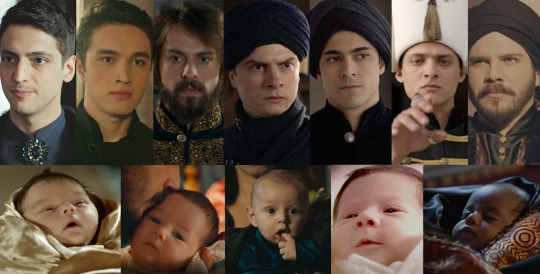
Şehzade Mehmed
Ahmed ascended the throne in December 1603, his first son Osman II was born in November 1604, followed a few months later by Prince Mehmed. Mehmed's mother was Kösem Sultan and he was born in March 1604 in Istanbul. The identity of his mother has long been in question, but nowadays we have evidence that indirectly clarifies that he was born as the son of Kösem Sultan. One such proof is that Kösem Sultan became a Haseki in late 1605 or early 1606, and this would hardly have been possible without a son. Another piece of evidence is an ambassadorial report from 1611/12 that says "The King has two sons, one is seven years old, the other six. His Majesty has three daughters as well, and to him sons are born very often, both for the abundancy of women and both for his youth and prosperity". Simone Contarini, who wrote this understood Osman and Mehmed as the two boys, but the three girls must have been mistaken, as Ahmed had four daughters alive at that time (Ayşe, Gevherhan, Fatma, and Hanzade). Perhaps Contarini only knew about the existence of Ayşe, Fatma, and Hanzade, as they were the children of Kösem Sultan, the famous favorite of Ahmed.
The counter-arguments that Mehmed was not the son of Kösem Sultan have now been overturned. In 1614, Della Valle recorded the second son of Sultan Ahmed as Sehzade Mahmud, which was mistakenly identified with Prince Murad by some. Murad was born in 1612 though. Mahmud was certainly a misunderstood version of Mehmed, not Murad. Another counter-argument was Valier's account of 1615. In that, he wrote that the Sultan not allowing the two older princes near Kösem Sultan, for the Sultan is well aware of Kösem Sultan's ambitions for her own children. Many identified the two princes as princes of Osman and Mehmed, so they though none of them were Kösem's sons. However, it was more likely that Valier meant Mustafa, Ahmed’s brother, and Osman, Ahmed's firstborn son. This is supported in particular by an earlier account of Valier, where he clearly describes that the sultan has four sons, two from the dead sultana and two from the living one. Since Mahfiruze - the mother of Osman - died around 1612, it is clear that she was the dead sultana. Mahfiruze's other son may have been Prince Bayezid, who was born in 1612 soon after Murad, the second son of the living sultana, Kösem.
It can be seen that the counter-arguments are much weaker, so we can say with relative certainty that Prince Mehmed was the firstborn son of Kösem Sultan. Not much is known about Mehmed's childhood. It is known that although they were taught and raised separately with Osman, their teacher was the same Ömer Efendi. Mehmed had joint programs with Osman after 1612 though. Kösem Sultan visited the Old Palace regularly to meet with Safiye Sultan, Ahmed's grandmother, and she regularly took Prince Mehmed with her, and occasionally also Osman. After Ahmed forbade her to spend time with Osman, she probably traveled to the Old Palace with Mehmed and possibly with her daughters or her second oldest son, Murad.
Mehmed's first real public appearance was shortly before his father's death, in 1617. It was then that the mosque complex of Sultan Ahmed was completed. Ahmed took his two oldest sons, Osman and Mehmed, to the opening ceremony. Ahmed died at the end of the year and a chaotic period ensued. The abolition of fratricide has long been a central theme in the Ottoman Empire and although Ahmed himself was against it and he did not execute his brother, Mustafa, he never made a legal decree about the topic. The only chance to save the lives of Mehmed and his younger brothers was to change the succession-system. Kösem Sultan for years tried to convince Ahmed and although she undoubtedly had something to do with Prince Mustafa surviving, after Ahmed’s death she could do nothing. However Haci Mustafa Aga, the chief black eunuch who was in close association with Kösem Sultan, was able to do something. He influenced the divan and ulema to enthrone the oldest living prince and spare the lives of the others. Thus the brother of Ahmed, Mustafa I, was put to the throne, so Mehmed and his brothers were locked up in the harem, but stayed alive.
Little is known about this short period since Mustafa was soon dethroned and Osman was enthroned. It was easy to influence Osman and this often pushed him to make wrong decisions. Osman was not popular, there were no supporters of his, there was no strong mother behind him who would have helped, so he was understandably terrified of Prince Mehmed. Mehmed was only four months younger, but his mother was an extremely popular and influential woman. Kösem Sultan never did anything against Osman, on the contrary, she tried to build a nice relationship and Osman also visited her in the Old Palace regularly. Over time, however, Osman's paranoia grew bigger. In the spring of 1621, he wanted to leave the capital to go on a campaign but was afraid to leave Mehmed in the capital. Osman feared that Kösem Sultan and Mehmed would do something and would enthrone Mehmed while he was at war. The logical step would have been for Osman to take Mehmed with him to the campaign, but Osman wanted a more definitive solution. For this reason, during the preparations for the campaign, he executed his brother in January 1621.
Mehmed certainly saw exactly how dangerous the situation was, and we can assume that during Osman's reign he feared that Osman would eventually revive the law of fratricide. Mehmed’s death shook Istanbul, poets of the age often write about this bloody event with immense disgust. Naima, for example, openly condemns and calls Osman a tyrant for making an innocent prince, Mehmed Khan, a martyr for his own power. According to legend, while Mehmed fought for his life with his executioners, he cursed Osman: "Osman! I beseech God that your life and your reign be full of dread, and as you have deprived me of my life, may the same fate be yours."
Whether the curse is true or not, the end soon reached Osman. A few days after Mehmed’s death, a huge snowstorm struck Istanbul, killing thousands of people. Commoners interpreted this as Revenge of Allah for Osman's disgusting act, so his popularity sank to unprecedented depths. And soon after his failed campaign, Osman was dethroned and brutally executed and mutilated.

Şehzade Cihangir
All we know about Prince Cihangir was that he was born in 1609 and died soon after. The identity of his mother is unknown, but it is almost certain that it was not Kösem Sultan. Kösem Sultan gave birth to another child, Hanzade Sultan, in 1609. It is unlikely that she would have given birth to two children in one year.
Şehzade Selim
Prince Selim was born in the summer of 1611 and died a month after his birth. The identity of his mother is unknown. He was buried in his father's mausoleum.
Şehzade Hasan
Prince Hasan was born in November 1612 between the later sultan Murad IV and Prince Bayezid, as the child of an anonymous concubine. He died shortly after his birth and was buried in his father's mausoleum.
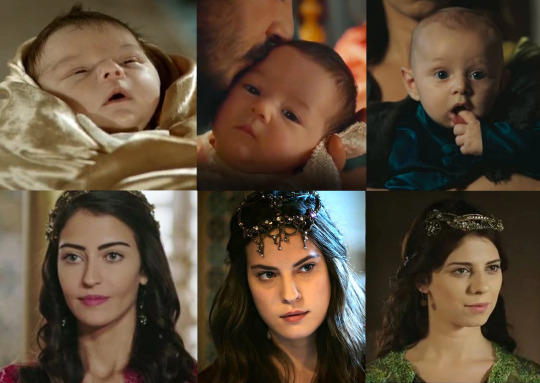
Şehzade Bayezid
Prince Bayezid was born in December 1612, a few months after the birth of Prince Murad (later Murad IV) in July. Accounts suggest that Bayezid was Osman's full-brother, so his mother was Mahfiruze, too. Mahfiruze disappears from the harem records around this time, perhaps for complications after childbirth, perhaps for other reasons, but she died during this period.
We don't know much about his childhood. After the deaths of Prince Mehmed and Sultan Osman II, Murad, who was barely older than Bayezid, ascended the throne in 1623. This essentially made Bayezid the heir to the throne, with many dangers, especially since he was only a half-brother to Sultan Murad. Because of Murad's youth, his mother, Kösem Sultan, ruled the empire as a regent. The situation was very bad, in recent years the empire has gradually sunk into anarchy and the situation has become increasingly bleak. Kösem Sultan and the statesmen fought hard to pull the empire out of the chaos, and although they achieved success, they failed to solve all the problems.
Then, in 1632, tension peaked in a Janissary rebellion. The Janissaries executed several of Murad's close confidants and demanded that the Sultan show them the princes. Murad was forced to agree to this and showed his brothers the Janissaries, who at this time began to rejoice for the princes. This humiliation was never forgotten and forgiven by Murad later. It was then that he experienced for the first time in his life that Bayezid (and also his other brothers) posed a huge threat to him. It is not known how Bayezid felt about the situation, however, given that he was not the son of Kösem, he could not expect too much support, which made it probably a difficult time for him.
In fact, we know almost nothing about Bayezid's life and personality, he lived his life locked up in the palace. Contrary to the picture conjectured by the series, Bayezid was not particularly close to Murad and there was no bond between them. This, too, certainly played a role in Bayezid's destiny. Murad considered Selim I to be his role model, trying to follow him in everything, so he also wanted to bring back the old succession-system so that his son would follow him on the throne, and not one of his younger brothers. In addition, Murad was getting worse mentally and physically over the years, so he began to become paranoid and saw conspiracy against him in everything. These things together caused the end of Murad's brothers. After the victory of Revan in 1635, while the people celebrated he ordered the execution of two of his half-brothers, Prince Bayezid and Suleiman. Bayezid was buried in the mausoleum of his father, Ahmed I.

Şehzade Orhan
The birth, death of Prince Orhan, and his mother's identity are all unknowns. Most give his birth date between 1612 and 1617, but there is no primer evidence to suggest this. Since we know so little about him, he probably died shortly after his birth.
Şehzade Hüseyin
Prince Hüseyin was born in November 1613, not knowing who his mother was, but it is certain that it was not Kösem Sultan. The time of his death is 1617, however, we do not have a more precise date. It is interesting, however, that he was not buried in the mausoleum of his father, Ahmed I, but in his grandfather's, Mehmed III's mausoleum. The reason for this was perhaps that Ahmed's mausoleum was not completed when he died (very early 1617), which is why he was buried in Mehmed III's mausoleum. Of course, they could have been reburied him to Ahmed's mausoleum as they did with Ahmed’s previously deceased sons. We don't know why they did not rebury him. Maybe since Ahmed himself had soon passed away, there was no time for that. Maybe the prince's tomb was too fresh when the other princes were reburied so he was left out?
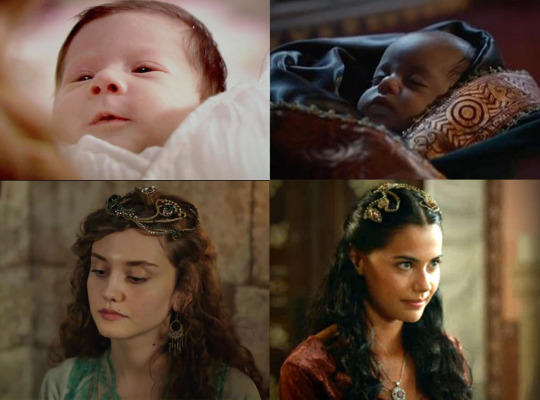
Şehzade Kasim
He was born in the beginning of 1614 as the son of Kösem Sultan. Prince Kasim spent a significant part of his childhood separated from his mother, locked in the kafes during the reigns of Mustafa II, Osman II, and then again Mustafa I. From 1617 to 1623 he had little or no access to his mother. It is not known how Kasim spent his childhood after 1623. As the son of Kösem and Murad's full-brother, perhaps during Murad's early reign, he was able to enjoy a little more freedom in the palace than his half-brothers. At least we can assume this when Kösem's reign lasted, until 1632.
In 1632 his life changed radically, for Kösem lost her regent position and Murad began to rule by himself with extreme strictness. This year there was a Janissary uprising in which the Janissaries, fearing that Sultan Murad had secretly executed his brothers, demanded that the Sultan show them the princes. Murad complied with the demands of the Janissaries, but never forgave the humiliation.
Little is known about Kasim's life during Murad's later reign. There are several legends based on contemporary and somewhat later accounts, however, their reliability is rather doubtful. These legends suggest that Kasim was very close to Murad. Knowing their mother, it seems logical that she tried to push the two boys to love each other, as this was how Kösem could protect her other sons from Murad. Murad and Kasim spent much time together, which Giovanni Cappello also confirms in his account from 1634. According to him, Murad regularly took Kasim with him, treated him very kindly, and even allowed his brother to grow a beard, which was not a custom among the princes living in the palace.
Knowing this, it is particularly surprising that Murad eventually turned against Kasim. Murad considered Selim I to be his role model, trying to follow him in everything, so he also wanted to bring back the old succession-system so that his son would follow him on the throne, and not one of his younger brothers. In addition, Murad was getting worse mentally and physically over the years, so he began to become paranoid and saw conspiracy against him in everything. As a result, Murad first made a fatal decision in 1635 and executed his half-brothers, Bayezid and Suleiman. He spared Kasim and his other brother, Ibrahim back then. But over time Murad's paranoia continued to grow and in 1638, after the victorious campaign in Baghdad, he also executed Kasim in the Revan Pavilion. Interestingly, barely two years later Murad died in the same place. Prince Kasim was buried in his father's mausoleum.

Şehzade Suleiman
Prince Suleiman was born in 1615 as the son of an unknown concubine. Some believe he was the son of Kösem Sultan, but this is completely ruled out for two reasons. On the one hand, Kösem gave birth to Ibrahim (later Ibrahim I) in November 1615, who was surely her son, so it is not mathematically possible that in 1615 she would have given birth to another child; on the other hand, Suleiman was executed by Sultan Murad in 1635, while his full-brother Kasim was executed only in 1638. It is clear that Murad first wanted to get rid of his half-brothers, so the fact that Suleiman died in 1635 along with Bayezid (who surely was Murad's half-brother) is in itself enough proof that he was not the son of Kösem. Prince Suleiman was also buried in the mausoleum of Ahmed I.

Used sources: C. Finkel - Osman's Dream: The Story of the Ottoman Empire; L. Peirce - The imperial harem; G. Börekçi - Factions and favourites at the courts of Sultan Ahmed I (r. 1603-17) and his immediate predecessors; S. Faroqhi - The Ottoman Empire and the World; C. Imber - The Ottoman Empire 1300-1650; F. Suraiya, K. Fleet - The Cambridge History of Turkey 1453-1603; G. Piterberg - An Ottoman Tragedy, History and Historiography at Play; F. Suraiya - The Cambridge History of Turkey, The Later Ottoman Empire, 1603–1839; Howard - A History of the Ottoman Empire; Öztuna - Devletler ve Hanedanlar; Uluçay - Padişahların Kadınları ve Kızları; : F. Davis - The Palace of Topkapi in Istanbul; Y. Öztuna - Genç Osman ve IV. Murad
* * *
Şehzade Mehmed
Ahmed 1603 decemberében került trónra, első fia II. Oszmán 1604 novemberében jött világra, őt néhány hónappal követte Mehmed herceg. Mehmed édesanyja Köszem szultána volt és 1604 márciusában jött világra Isztambulban. Édesanyjának kiléte sokáig kérdéses volt, azonban napjainkban rendelkezésünkre állnak olyan bizonyítékok, melyek közvetetten egyértelműsítik, hogy Mehmed Köszem fiaként jött világra. Egyik ilyen bizonyíték, hogy Köszem 1605 végén vagy 1606 elején lett Haszeki szultána, ez pedig fiúgyermek születése nélkül aligha lett volna lehetséges. Másik bizonyíték egy 1611/12-ből származó követi beszámoló, mely úgy szól "a szultánnak két fia van, egyikük hét éves, másikuk hat. Emellett a szultánnak három lánya is van. Fiatalsága és termékenysége, valamint az, hogy nőkben nem szenved hiányt arra enged következtetni, hogy hamarosan több fiú fogja követni az első kettőt. Simone Contarini, aki az írás szerzője a két fiú alatt Oszmánt és Mehmedet értette, a három lány viszont minden bizonnyal tévedés lehetett, ugyanis Ahmednek ekkoriban négy lánya volt életben (Ayşe, Gevherhan, Fatma és Hanzade). Talán Contarini csak Ayşe, Fatma és Hanzade létéről tudott, ők voltak ugyanis Köszem - a kedvenc ágyas - gyermekei.
Az ellenérvek arra, hogy Mehmed nem Köszem fia volt mára megdőltek. Della Valle 1614-ben Ahmed szultán második fiát Sehzade Mahmudként jegyezte fel, melyet tévesen Murad herceggel azonosítottak néhányan, aki 1612-ben született. A Mahmud minden bizonnyal a Mehmed félreértett változata volt, nem a Muradé. Másik ellenérv volt Valier 1615-ös beszámolója, aki arról beszélt, hogy a szultán nem engedi a két idősebb herceget Köszem közelébe, ugyanis a szultán jól ismeri Köszem ambíciójit és tudja, hogy Köszem csak ártana a két hercegnek saját gyermekei érdekében. Sokan a két herceget Oszmán és Mehmed hercegekkel azonosították, azonban valószínűbb, hogy Valier Musztafára, Ahmed öccsére és Oszmánra gondolt. Különösen alátámasztja ezt Valier egyik korábbi beszámolója, ahol egyértelmen leírja, hogy a szultánnak négy fia van, kettő a halott és kettő az élő szultánáról. Mivel Mahfiruze - Oszmán anyja - 1612 körül elhunyt egyértelmű, hogy ő a halott szultána. Mahfiruze másik fia talán Bayezid herceg lehetett, aki nemsokkal Köszem - az élő szultána - második fia, Murad után született 1612-ben.
Látható, hogy az ellenérvek jóval gyengébbek, így relatív biztonsággal állíthatjuk, hogy Mehmed herceg Köszem szultána első szülött gyermeke volt. Mehmed gyermekkoráról nem sokat tudni. Ismert, hogy bár külön oktatták és nevelték Oszmán hercegtől, tanítójuk ugyanaz az Ömer Efendi volt. Oszmánnal 1612 után is voltak közös programjai Mehmednek. Köszem szultána ugyanis rendszeresen látogatott a Régi Palotába, hogy ott találkozzon Safiye szultánával, Ahmed nagyanyjával és ezekre az utakra rendszeresen vitte magával Mehmed herceget, és alkalmanként Oszmánt is. Miután Ahmed eltiltotta Oszmántól valószínűleg Mehmeddel kettesben, esetleg lányaival vagy Muraddal kiegészülve utaztak a Régi Palotába.
Mehmed első nyilvános megjelenése nemsokkal apja halála előtt volt, 1617-ben. Ekkor készült el ugyanis teljes egészében Ahmed szultán mecset kompelxuma, ahová két idősebb fiát, Oszmánt és Mehmedet is magával vitte a megnyitóra. Ahmed még az év végén elhunyt és kaotikus időszak következett. A testvérgyilkosság eltörlése régóta volt központi téma az Oszmán Birodalomban és bár maga Ahmed ellene volt és nem is végeztette ki édesöccsét, Musztafát, sosem hozott döntést arról, hogy halála után ki kövesse a trónon. Az egyetlen esély Mehmed és öccsei életének megmentésére az volt, ha az öröklési sorrendet örökre megváltoztatják. Köszem éveken át próbálta Ahmedet meggyőzni erről és bár kétségkívül köze volt ahhoz, hogy Musztafa herceg életben maradt, Ahmed halála után ő már nem tehetett semmit. Nem úgy a Köszemmel szoros szövetségben álló Haci Musztafa Aga, a fő fekete eunuch, aki befolyásával meggyőzte a divánt és ulemát, hogy Ahmed helyére a legidősebb élő herceget tegyék, a többiek életét pedig kíméljék meg. Így került I. Musztafa néven Ahmed öccse a trónra, Mehmed pedig testvéreivel együtt elzárásra a hárembe.
Keveset tudunk erről a rövid időszakról, hiszen Musztafát mentális betegsége maitt hamarosan trónfosztották és helyére Oszmánt ültették. Oszmán nagyon befolyásolható volt, mely tulajdonsága maitt gyakran hibázott. Oszmán nem volt népszerű, nem voltak támogatói, nem állt mögötte egy erős édesanya, aki segítette volna, így érthető módon rettegett Mehmed hercegtől. Mehmed csak négy hónappal volt fiatalabb, édesanyja viszont rendkívül népszerű és befolyásos asszony volt. Köszem sosem tett semmit Oszmán ellen és Oszmán maga is igyekezett jó viszont ápolni a nővel, rendszeresen látogatta a Régi Palotában. Idővel azonban Oszmán paranoiája eldurvult. 1621 tavaszán el akarta hagynia fővárost, hogy hadjáratra induljon, azonban félt Mehmedet a fővárosban hagyni. Oszmán attól félt, hogy Köszem és Mehmed puccsot elkövetve elfoglalják a trónt, amíg ő háborúzik. A logikus lépés az lett volna, ha emiatt Oszmán magával viszi Mehmedet a hadjáratra, azonban Oszmán ennél véglegesebb megoldást akart. Emiatt a hadjárat előkészületei alatt 1621 januárjában megölette testvérét.
Mehmed minden bizonnyal pontosan látta, milyen veszélyes helyzetben van és feltételezhetjük, hogy Oszmán uralkodása alatt rettegett attól, hogy Oszmán végül feléleszti a testvérgyilkosság törvényét. Mehmed halála megrázta Isztambult, a kor és későbbi korok költői gyakran írnak erről a véres eseménnyel hatalmas undorral. Naima például nyíltan elítéli és zsarnoknak nevezi Oszmánt, amiért saját hatalma érdekében mártrírrá tett egy ártatlan herceget, Mehmed Khant. A legendák szerint amíg Mehmed életéért küzdött a kivégzőivel elátkozta Oszmánt: "Oszmán! Könyörögni fogok Allahnak, hogy egész életed és uralkodásot rettegésben teljen és sorsod legyen ugyanolyan, mint az enyém."
Akár igaz akár nem, Mehmed átka hamarosan elérte Oszmánt. Néhány nappal Mehmed halála után hatalmas hóvihar sújtott le Isztambulra, több ezer ember halálát okozva. Az emberek ezt Allah bosszújaként értelmezték Oszmán undorító cselekedete miatt, így Oszmán népszerűsége sosem látott mélységekbe süllyedt. Sikertelen hadjárata után pedig hamarosan trónfosztották és brutális módon kivégezték és megcsonkították Oszmánt.

Şehzade Cihangir
Cihangir hercegről annyit tudunk, hogy 1609-ben született és nemsokkal később el is hunyt. Édesanyjának kiléte nem ismert, viszont szinte bizton állítható, hogy nem Köszem volt. Köszem ugyanis 1609-ben egy másik gyermeknek, Hanzade szultánának adott életet, így valószínűtlen, hogy egy évben két gyermeket is világra hozott volna.
Şehzade Selim
Szelim herceg 1611 nyarán született és születése után nemsokkal meg is halt. Anyja kiléte nem ismert. Apja mauzóleumában helyezték végső nyugalomra.
Şehzade Hasan
Hasan herceg 1612 novemberében született későbbi IV. Murad és Bayezid herceg között, egy névtelen ágyas gyermekeként. Születését követően nemsokkal elhunyt és apja mauzóleumában helyezték végső nyugalomra.

Şehzade Bayezid
Bayezid herceg 1612 decemberében született néhány hónappal Murad herceg (későbbi IV. Murad) júliusi születése után. A követi beszámolók valószínűsítik, hogy Bayezid Oszmán édesöccse volt, így édesanyja neki is Mahfiruze volt. Mahfiruze innentől eltűnik a hárem jegyzőkönyvekből, talán a szülés után fellépő komplikációk, talán más okok miatt, de ebben az időszakban elhunyt.
Gyermekkoráról nem tudunk sokat. Mehmed herceg és Oszmán szultán halála után kisebb kitérővel a Bayezidnél alig idősebb Murad jutott trónra 1623-ban. Ezzel lényegében Bayezid lett a trónörökös, ami igen sok veszéllyel járt, különösen, hogy csak féltestvére volt Murad szultánnak. Murad fiatalkora miatt édesanyja Köszem szultána uralkodott a birodalmon régensként. A helyzet igen rossz volt, az elmúlt években a birodalom fokozatosan süllyedt anarchiába és vált egyre kilátástalanabbá a helyzet. Köszem és az államférfiak erősen küzdöttek, hogy a birodalmat kihúzzák a csávából, és bár értek el sikereket, nem sikerült megoldaniuk a problémákat.
1632-ben aztán egy janicsár lázadásban csúcsosodott ki a feszültség. A janicsárok kivégezték Murad több közeli bizalmasát és követelték a szultántól, hogy mutassa meg nekik a többi herceget. Murad kénytelen volt beleegyezni ebbe és megmutatta janicsároknak testvéreit, akik ekkor éltetni kezdték a hercegeket. Ezt a megaláztatást később Murad sosem felejtette el. Ekkor tapasztalta meg életében először, hogy Bayezid hatalmas veszélyt jelent rá. Nem tudni, hogy Bayezid, hogyan élte meg a helyzetet, azonban tekintettel arra, hogy nem Köszem fia volt nem számíthatott túl sok támogatásra, emiatt feltehetőleg nehéz időszak volt ez számára.
Tulajdonképpen Bayezid életéről, személyiségéről szinte semmit nem tudunk, életét a palotába elzárva élte. A sorozat által sejtetett képpel ellentétben, Bayezid nem állt különösebben közel Muradhoz és nem volt köztük semmi kötelék. Ennek is minden bizonnyal szerepe volt Bayezid végzetében. Murad példaképének I. Szelimet tartotta, őt próbálta követni mindenben, így a régi öröklési rendet is vissza akarta hozni, hogy utána fia kövesse a trónon, ne pedig öccsei közül valaki. Emellett Murad mentálisan és fizikailag is egyre rosszabb állapotban volt az évek során, így kezdett paranoiddá válni és mindenben konspirációt látott személye ellen. Ezek együttesen okoztákazt, hogy 1635-ben a győztes revani hadjárata után, míg az emberek ünnepeltek ő elrendelte két féltestvére, Bayezid és Szulejmán hercegek kivégzését. Bayezidet apja, I. Ahmed mauzóleumában helyezték végső nyugalomra.

Şehzade Orhan
Orhan herceg születése, halála és anyja kiléte egyaránt ismeretlen. A legtöbben 1612 és 1617 közé teszik születését, de nincs erre utaló bizonyíték. Mivel ennyire semmit nem tudunk róla, valószínűleg röviddel születése után elhunyt.
Şehzade Hüseyin
Hüseyin herceg 1613 novemberében jött világra, nem tudni, hogy ki volt az édesanyja, ám az bizonyos, hogy nem Köszem. Halálának ideje 1617, azonban pontosabb időpont nem áll rendelkezésünkre. Érdekesség viszont, hogy nem Ahmed mauzóleumában, hanem nagyapja III. Mehmed mauzóleumában temették el. Ennek oka talán az volt, hogy Ahmed mauzóleuma még nem készült el, mikor meghalt, emiatt III. Mehmedébe temették. Természetesen újratemethették volna, mint Ahmed korábban elhunyt fiait, azonban mivel Ahmed maga is nemsoká elhunyt erre nem jutott idő. Esetleg túl friss volt a sír, amikor a többi herceget újratemették, így ő kimaradt?

Şehzade Kasim
1614 legelején jött világra Köszem szultána fiaként. Kasim herceg gyermekkorának jelentős részét édesanyjától elszakítva töltötte, elzárva a kafesben I. Musztafa, II. Oszmán majd újra I. Musztafa uralkodása alatt. 1617-től 1623-ig nem vagy csak alig találkozhatott édesanyjával. Nem tudni, hogy Kasim gyermekkorát hogyan töltötte. Mivel Köszem fia volt és Murad édestestvére, talán Murad 1623-ban kezdődő uralkodása alatt valamivel nagyobb szabadságot élvezhetett a palotában, mint féltestvérei. Legalábbis feltételezhetjük ezt amíg tartott Köszem uralma, 1632-ig.
1632-ben élete gyökeresen megváltozott, ugyanis Köszem elveszítette régensi pozícióját és Murad kezdett vasszigorral uralkodni. Ebben az évben zajlott egy janicsár felkelés, mely során a janicsárok félve attól, hogy Murad szultán titokban kivégeztette öccseit, követelték, hogy a szultán mutassa meg a herceget. Murad eleget tett a janicsárok követeléseinek, azonban sosem bocsátotta meg a megaláztatást.
Kasim életéről Murad uralkodása alatt keveset tudunk. Több legenda is létezik korabeli és valamivel későbbi beszámolókra alapozva, azonban ezek megbízhatósága meglehetősen kétséges. Ezek a legendák azt sugallják, hogy Kasim igen közel állt Muradhoz. Ismerve édesanyjukat logikusnak tűnik, hogy igyekezett úgy nevelni, hogy a két fiú szeresse egymást, hiszen így óvhatta leginkább Köszem többi fiát Muradtól. Úgy tartják, hogy Murad és Kasim sok időt töltöttek együtt, amit Giovanni Cappello követi beszámolója is alátámaszt 1634-ből. Szerint Murad rendszeresen vitte magával Kasimot, nagyon kedvesen bánt vele és még azt is megengedte öccsének, hogy szakállt viselhessen, ami nem volt szokás a palotában élő hercegek között.
Ennek fényében különösen meglepő, hogy Murad végül Kasim ellen fordult. Murad példaképének I. Szelimet tartotta, őt próbálta követni mindenben, így a régi öröklési rendet is vissza akarta hozni, hogy utána fia kövesse a trónon, ne pedig öccsei közül valaki. Emellett Murad mentálisan és fizikailag is egyre rosszabb állapotban volt az évek során, így kezdett paranoiddá válni és mindenben konspirációt látott személye ellen. Ennek eredményeként Murad először 1635-ben hozott meg egy végzetes döntés és végeztette ki féltestvéreit, Bayezid és Szulejmán hercegeket. Ekkor Kasimot és másik öccsét, Ibrahimot megkímélte. Idővel azonban Murad paranoiája tovább nőtt és 1638-ban a győztes bagdadi hadjárata után kivégeztette Kasimot is, a Revan Pavilonban. Érdekesség, hogy alig két évvel később Murad ugyanitt halt meg megtörve. Kasim herceget édesapja mauzóleumában temették el.

Şehzade Szulejmán
Szulejmán herceg 1615-ben született egy ismeretlen ágyas fiaként. Egyesek úgy tartják Köszem szultána fia volt, ám ez teljességgel kizárt két okból is. Egyrészt Köszem 1615 novemberében adott életet Ibrahimnak (későbbi I. Ibrahim), aki tudottan az ő fia volt, így matematikailag nem lehetséges, hogy 1615-ben egy másik gyermeknek is életet adott volna; másrészt Szulejmánt 1635-ben végeztette ki Murad szultán, míg édestestvérét Kasimot csupán 1638-ban. Egyértelmű, hogy Murad először féltestvéreitől akart megszabadulni, így a tény, hogy Szulejmán 1635-ben halt meg, önmagában is elég bizonyíték, hogy nem Köszem fia volt. Szulejmán herceget is I. Ahmed mauzóleumában temették el.

Felhasznált források: C. Finkel - Osman's Dream: The Story of the Ottoman Empire; L. Peirce - The imperial harem; G. Börekçi - Factions and favourites at the courts of Sultan Ahmed I (r. 1603-17) and his immediate predecessors; S. Faroqhi - The Ottoman Empire and the World; C. Imber - The Ottoman Empire 1300-1650; F. Suraiya, K. Fleet - The Cambridge History of Turkey 1453-1603; G. Piterberg - An Ottoman Tragedy, History and Historiography at Play; F. Suraiya - The Cambridge History of Turkey, The Later Ottoman Empire, 1603–1839; Howard - A History of the Ottoman Empire; Öztuna - Devletler ve Hanedanlar; Uluçay - Padişahların Kadınları ve Kızları; : F. Davis - The Palace of Topkapi in Istanbul; Y. Öztuna - Genç Osman ve IV. Murad
#Ahmed I#Murad IV#sehazde bayezid#sehazde kasim#ibrahim I#deli ibrahim#Kösem sultan#kösem#mahfiruz hatun#mahfiruze#Sehzade mehmed#Osman II#fratricide#selim i#yavuz selim
44 notes
·
View notes
Note
Ibrahim I's + harem and children
Consorts:
Haseki Turhan Hatice Sultan later Valide Sultan (?? - 4.8.1683): mother of Mehmed IV and maybe of Fatma Sultan and Atike Sultan as well, she was educated in the palace of Ibrahim’s sister Atike and then gifted to Kösem, to whom she was in service before being presented to the sultan. Probably Russian, Tavernier said in 1668 that she was Circassian instead. She was the last regent of the Ottoman Empire.
Haseki Hatice Muazzez Sultan (?? - 12.9.1687): Ibrahim’s second haseki and mother of the future Ahmed II. Nationality, place and date of birth are unknown. The earliest document that mentions her is dated 9 August 1642, and it is an order of Ibrahim to bring furniture from another mansion for her rooms in the harem. It is not known if she had other children. She never became Valide Sultan as she died in 1687, four years before her son became sultan.
Haseki Saliha Dilaşub Sultan later Valide Sultan (?? - 3.1.1690): origins unknown, she was Ibrahim’s third haseki sultan even though, according to Sakaoğlu, she was the first concubine to be presented to the new sultan. Mother of Süleyman II. She is called Aşübe Sultan in a palace document about some of her jewels. Her country of origin and ethnicity is unknown. Her stipend was higher than the other hasekis’, 1,300 aspers a day, throughout Ibrahim’s reign. It is not known if she had other children.
Haseki Ayşe Sultan: she was first mentioned in a palace document dated January 1645, where it is ordered to prepare the rooms for “the new haseki Ayşe Sultan”. She must have been the fourth haseki. It unknown whether she had children or not.
Haseki Mahienver Sultan: she is mentioned for the first time in a palace document dated 2 May 1646, where che is called “Fifth Haseki Mahienver Sultan”. It is unknown whether she had children or not.
Haseki Saçbağlı Sultan: she is mentioned as recipient of the treasury of Egypt in an undated document. She is traditionally considered the sixth haseki. It is unknown whether she had children or not.
Haseki Şivekâr Sultan (? - 1693): seventh haseki, she was allegedly the largest woman in the empire, weighing 150 kg. Armenian, she was Ibrahim’s true favourite for some time and even influenced the politics of the empire. It is not known whether she had children or not.
Haseki Hümaşah Sultan: eighth haseki, she is sometimes called telli haseki or simply haseki sultan, as she was the sultan’s wedded wife. She entered the harem only in 1647 but Ibrahim fell in love with her immediately and married her in a lavish ceremony. She received the palace of Ibrahim Paşa as a wedding gift, while Kosem’s daughter Ayşe, Fatma and Hanzade and Murad IV’s daughter Kaya Ismihan were ordered by the sultan to serve her. Hümaşah was mother to Sehzade Orhan, who died in infancy six months after Ibrahim’s execution.
Hubyar Hatun: wife of İbrahim Ağa, brother of Grand Vizier Ahmed Paşa, she took Ibrahim’s fancy for a while. Uluçay, on the other hand, believes she was a servant in the harem.
Şekerpare Hatun (? - 1649?): thought to be a harem servant by Naime, she was probably the High Treasurer of the harem. She held great influence over Ibrahim for a time and, together with Hubyar and Yahudi Harun, she used to take bribes in exchange for favours. Two months before Ibrahim’s dethronement, her wealth was confiscated and she was exiled to Egypt. There, according to Evliya Çelebi, she married Kara Musa Paşa. In Tarih-i Gılmani, it is said that matters of state were left to Cinci Hoca and Şekerpare Kadın, who caused great ruin in the empire.
Zafire Hatun: Georgian concubine, she became pregnant by Ibrahim during Murad IV’s reign, so Kösem Sultan gave her to the Chief Black Eunuch Sünbül Ağa so that he drowned her in the sea. Instead, the eunuch took her to his home where she had a son, whom she named Osman. The baby became known in Istanbul as “the bastard of the Chief Black Eunuch” and when Kösem Sultan found out, she exiled them all. On the route to Egypt, they were captured at sea and taken to Malta, where the child was declared an Ottoman Prince. Later on, he converted to Christianity and became a priest known as “Padre Ottomano” (in English: Father Ottoman). According to the Venetian ambassador who related this story, the tensions between the Ottoman government and the Venetians in 1645 were caused by this incident. It is not known what happened to Zafire.
Sakızula: shown by Alderson as one of Ibrahim’s consorts.
Hezarpare Ahmed Paşa’s wife: one of Ibrahim’s passing fancies, she was given Princess Beyhan Sultan to raise. According to Alderson, Hezarpare Ahmed Paşa was given the little princess as a wife in return.
daughter of Şeyhülislam Mu'id Ahmed Efendi: according to A. L. Castellan, Ibrahim wanted her but her father opposed it so the sultan had her kidnapped from the baths and later sent her back home.
Children:
Unnamed Princess (1640 - ?): she married Baki Bey, son of Grand Vizier Hezarpare Ahmed Paşa from his previous wife.
Mehmed IV (2.1.1642 - 6.1.1693): son of Turhan Hatice, 19th Ottoman Sultan
Süleyman II (15.4.1642 - 22.6.1691): son of Saliha Dilaşüb, 20th Ottoman Sultan
Fatma Sultan (9.1642 - 1657): maybe daughter of Turhan Hatice. She married in 1645 Musahip (Silahdar) Yusuf Paşa, who was executed by Ibrahim himself on 22 January 1646. A month later, her father married her to Musahib Fazlı Paşa, whom he removed from Istanbul a couple of months later. She died in 1657 and was buried in the Yeni Valide Mosque.
Gevherhan Sultan (1642 - 27.10.1694): she married Cafer Paşa on 23 November 1646. According to Alderson and Süreyya, she was married to Çavuşzade Mehmed Paşa instead until 1681. In 1692, she married Helvacı Yusuf Paşa.
Ahmed II (25.2.1643 - 6.2.1695): son of Hatice Muazzez, 21st Ottoman Sultan
Şehzade Murad (4.1643 - 1.1644)
Şehzade Selim (19.3.1644 - 9.1669)
Şehzade Osman (8.1644 - died young)
Beyhan Sultan (1645 - 15.9.1700): she was married to Küçük Hasan Paşa in 1646 but her husband died the following year. On 16 September 1647 she married Grand Vizier Hezarpare Şehri Ahmed Paşa. He was executed on 7 August 1648 and Beyhan became a widow again. She later married Uzun İbrahim Paşa, but he died in 1683. In 1689 Bıyıklı Mustafa Paşa, who died in 1699. Beyhan Sultan died on 15 September 1700 and was buried in Süleyman the Magnificent’s tomb.
Şehzade Bayezid (1.5.1646 - 8.1647)
Şehzade Cihangir (14.12.1646 - 1.12.1648)
Ayşe Sultan (around 1646 - ?): she married İbşir Mustafa Paşa in 1655 but her husband was executed in the same year. Nothing else is known about her.
Şehzade Orhan (9.1648 - 1.1650): son of Hümaşah. Uluçay does not give a date of birth but says that the little prince died 6 months after Ibrahim’s execution.
Atike Sultan (? - ?): possibly daughter of Turhan Hatice, as it is said she was Mehmed IV’s own sister. She married Sarı Kenan Paşa in 1648 and, when her husband was executed in 1659, she married Anatolian Inspector Mostarlı İsmail Paşa in the same year. She died at a young age in the reign of her brother.
Kaya Sultan (? - ?): she married Haydarağazade Mehmed Paşa in 1649, who was executed in 1661. date of death and burial are unknown.
Ümmügülsüm Sultan (? - 1654?): she married Mirahur Abaza Ahmed Paşa in 1653 but died shortly after.
Unnamed Princess (? - ?): she was engaged to Kuloğlu Mustafa Paşa but he did not accept the marriage (he would marry Mehmed IV’s daughter Hatice in 1675), so she married Cerrah Kasım Paşa instead, in January 1666.
sources:
A. D. Alderson - The Structure of the Ottoman Dynasty
Leslie Peirce - The Imperial Harem: Women and Sovereignty in the Ottoman Empire
Necdet Sakaoğlu - Bu Mülkün Kadın Sultanları: Valide Sultanlar, Hatunlar, Hasekiler, Kadınefendiler, Sultanefendiler
M. Çağatay Uluçay - Padişahların Kadınları ve Kızları
#anon#ask post#ask: ottoman history#*consortsandchildren#ibrahim i#turhan hatice sultan#saliha dilasub sultan#haseki hatice muazzez sultan#haseki ayse sultan#haseki mahienver sultan#haseki sacbagli sultan#haseki sivekar sultan#haseki humasah sultan#hubyar hatun#sekerpare hatun#zafire hatun#unnamed daughters of ibrahim i#mehmed iv#suleyman ii#ahmed ii#fatma sultan daughter of ibrahim i#gevherhan sultan daughter of ibrahim i#beyhan sultan daughter of ibrahim i#ayse sultan daughter of ibrahim i#atike sultan daughter of ibrahim i#kaya sultan daughter of ibrahim i#ummugulsum sultan daughter of ibrahim i
51 notes
·
View notes
Note
hello! you do extremely well research congratulations! i enjoyed your post about sehzade beyazid in particular! do you know what happened to his 4 daughters? did they marry had children e.t.c? also the same about sehzade mustafa did he have any daughters that reached adulthood and also did he marry himself before his execution?
Hello! Thank you so much, I really appreciate it.
I’ve found a recent biography of Suleyman (Yılmaz Öztuna - Kanuni Sultan Süleyman) which talks about the families of his children as well. I haven’t had the opportunity to check it out well, except for the fact he calls Mahidevran “Mahidevran Haseki”…. though he calls Hurrem “Hurrem Haseki Sultan” so I don’t know. You’d think a recent work means the author used new foundings for his book so let’s see what he says:
Mihrimah Sultan: married Dâmâd Muzaffer Paşa, who died in 1593. He was Governor of Bağdâd, Governor of Şehr-i Zor, Governor of Kıbrıs, and he was appointed Governor of Lûristân 1592, a year before his death.
Hatice Sultan: no information
Ayşe Sultan: married Dâmâd Eretnaoğlu Hoca ‘Alî Paşa and had a son, Sultanzade Mehmed Bey
Hanzade Sultan: no information
I doubt Mustafa got married before he died. He was a prince and in the 16th century princes didn’t contract marriages anymore, only slave concubines. Yılmaz Öztuna says his concubine was one Fulane Hatun, a Crimean slave who was born in 1525 (he says Mehmed’s concubine was called Fulane as well, though, so I don’t know. Of course concubines with the same names exist but it seems fishy to me; he also says that one of Suleyman’s concubines was called Fulane and one daughter of his as well!! Just how many Fulanes were there in that family?). His children were:
Mehmed: drowned in Bursa on 10 September 1553 at 7 years old
Ahmed: died in 1552.
Şah Sultan: married Dâmâd ‘Abdülkerîm Ağa on the same day Selim’s daughters got married, 1 August 1562. He was the Janissaries Ağa up until 1564. He supposedly died in or around 1580. Şah Sultan died on 2 October 1577, at 27 years old. Alderson gives this date of death to an unnamed daughter who was married to one Mahmud, without titles.
Nergis-Şah Sultan: born in 1536, she married Dâmâd Cenâbî Ahmed Paşa who died in 1562. He was Governor of Kütahya for 20 years.
On the other hand, Alderson only lists three children (he also wrote his book in 1956, though)
Mehmed (or Murad), executed in October 1553
Şah Sultan, who was married to one Hasan Ağa
an unnamed daughter, who died on 2 October 1577, married to one Mahmud
I don’t know what Yılmaz Öztuna’s sources are because his book has no notes section (or at least, my copy doesn’t?). I’ve tried to look on the internet for some confirmation/more info from other historians but I couldn’t find anything. Especially about the princesses, who obviously weren’t executed with their fathers. They seem like ghosts.
I’d like to point out something before I post this ask. I’ve seen people claim on the internet that Mustafa’s concubines (or Bayezid’s) were called X Haseki or X Haseki Sultan but those are titles reserved for the sultan’s concubines. Princes didn’t have Haseki Sultans. Nurbanu was a Hatun until Selim elevated her to the Haseki Sultan status after he succeeded his father (maybe when he married her?)
#anon#ask post#ask: ottoman history#sehzade mustafa son of suleyman i#sehzade bayezid son of suleyman i#i'm so sorry this is so long
19 notes
·
View notes